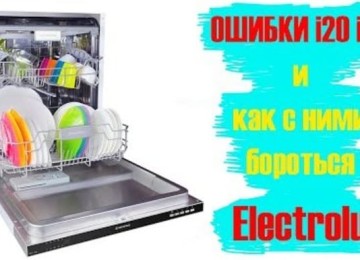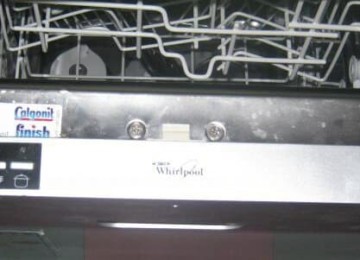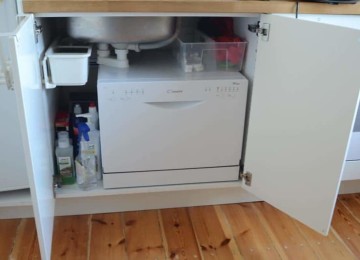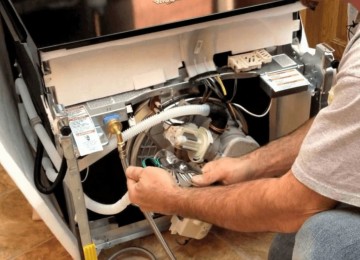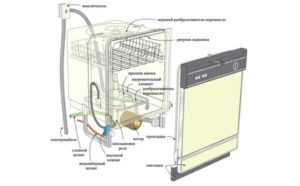 The dishwasher is designed to free up a person's time. All the dirty work will be done for him. You just need to load the dirty dishes and unload the clean ones. And while washing, go about your business.
The dishwasher is designed to free up a person's time. All the dirty work will be done for him. You just need to load the dirty dishes and unload the clean ones. And while washing, go about your business.
Starting up a dishwasher for the first time raises questions for many. Not everyone knows how it works, its details and varieties. Is it worth purchasing it at all and how well will the dishes be washed? This article will talk about the operating principle and design of a dishwasher.
The history of the dishwasher
The first patent for a dishwashing machine was received by Joule Guoton in 1850. It was characterized by manual operation and poor cleaning process. They had already tried to create something similar before, but the attempts were unsuccessful. They never made it into history. Guotong's design was ineffective. A cylinder with a special shaft inside. Water flowed down it into buckets, which were then lifted by hand and poured out again.
Following him in 1855, Josephine Cochrane acquired a patent for a new type of machine. History goes far into her past. Porcelain dishes break easily, and she had a lot of them. One day, missing a few porcelain plates, she decided to create a dishwasher. Her husband died, leaving large debts. Having taken the path of poverty, she went into a barn and came out a few months later, presenting to everyone her washing mashine, which washes the dishes itself. This version was already close to the modern one.
The drum could rotate, the quality improved, and the water was heated. But, due to the lack of repair specialists and due to the high price, it was not possible to distribute it. The maids also staged protests. Their argument was that the dishwasher was putting them out of work. In the 50s of the twentieth century, the machine began to sell well.
Financial conditions improved, many women went to work. Washing dishes began to take less time, and the dishwasher became a popular purchase. 1929 is famous for the creation of the first electric dishwasher.
The automatic control washing mashine was created in 1960. This option is very similar to the modern one. Dishes were being installed. Afterwards, detergent and hot water were supplied there. Next, the water was drained and the dishes were rinsed. In 1978, a touch-controlled machine was created.
How does a dishwasher work?
At first glance, a dishwasher seems to be a complex mechanical device consisting of a large number of parts. But that's not true.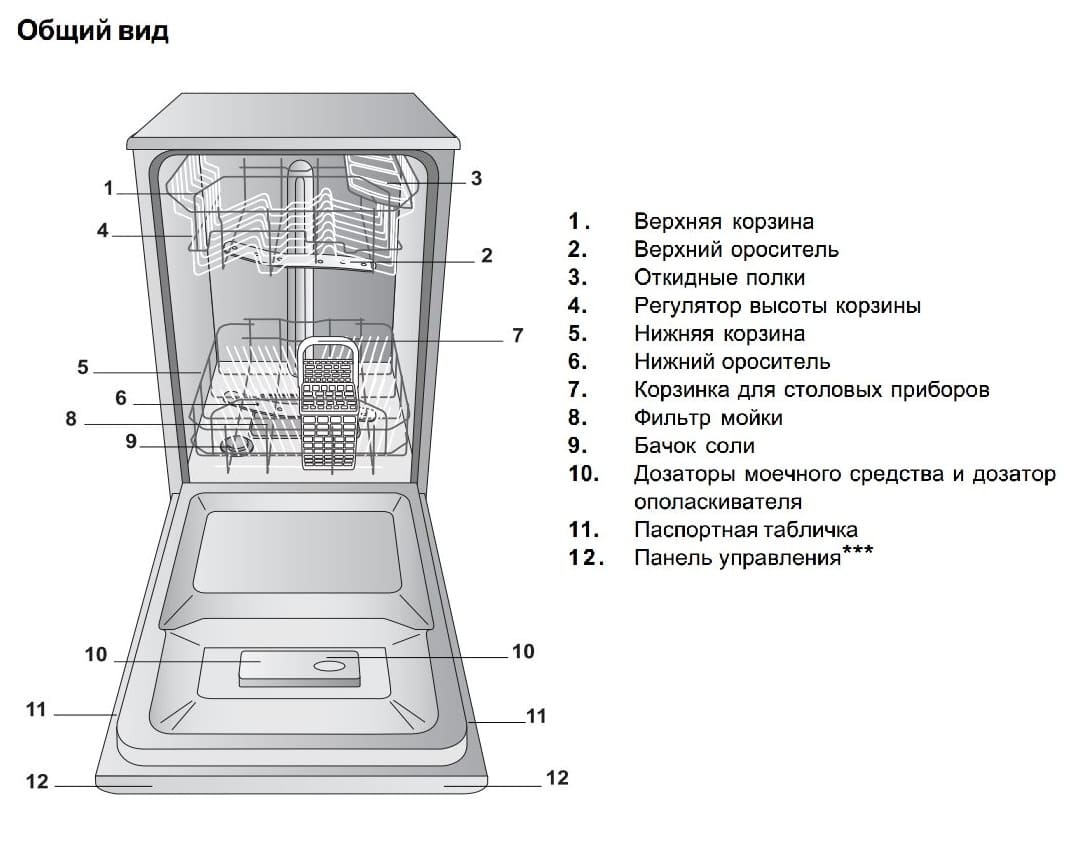
Modern machines are vertical loading dishes. Thanks to this, it is quite easy to attach it to any kitchen.The dishwasher can stand alone and not be built into the kitchen unit. It is functional and does not take up much space. Its installation should be entrusted to a specialist in order to avoid problems later. It must be connected to electricity, sewerage and water supply.
Divided into full-size, compact and narrow:
- Full size (width – 60 cm; height – 85 cm). In demand in large families. Allows you to wash a large number of dishes at one time, spacious.
- Compact (height – 45 cm). Capacity – no more than 5 sets of dishes. Suitable for a small kitchen and a small family.
- Narrow (width - no more than 50 cm). For a small kitchen. If you need a dishwasher that doesn't take up much space, then this type is a good fit.
The base consists of:
- electronic control module. The largest button starts the wash. Most often located on the left. On the right is the display. On it you can see the level of water hardness and operating time. The mode selection, start and pause buttons are also located here. The panel can be touch-sensitive or mechanical. From the first machine they cost more and look better. But mechanical ones are more convenient to use and much easier to repair. Also, people unfamiliar with the sensor will have a harder time adjusting;
- sensors that supply all the information;
- actuators.
The structure itself consists of the following:
- two pumps. One supplies water for washing, and the other drains the unusable water;
- heating device. Provides heating of water to a certain temperature;
- filters. One of them filters water, the other purifies contaminated water from food residues;
- temperature sensor;
- sensor that controls the volume of water filled;
- sprinklers.Thanks to them, the dishes are washed efficiently. Water is sprayed under high pressure;
- control Panel. Mode selection menu, on and off buttons. All information about washing is also collected here;
- ion exchanger It contains resin in granules. The water passes through, is cleared of heavy impurities and becomes softer;
- basket for dirty dishes. It is installed upside down. The lower tier is for dirtier dishes, since the cleaning process is more intensive there. The dishes themselves should first be cleaned of food residues;
- motor;
- system for drying washed dishes;
- door. On its inside, detergents are poured and liquid rinse aids are poured.
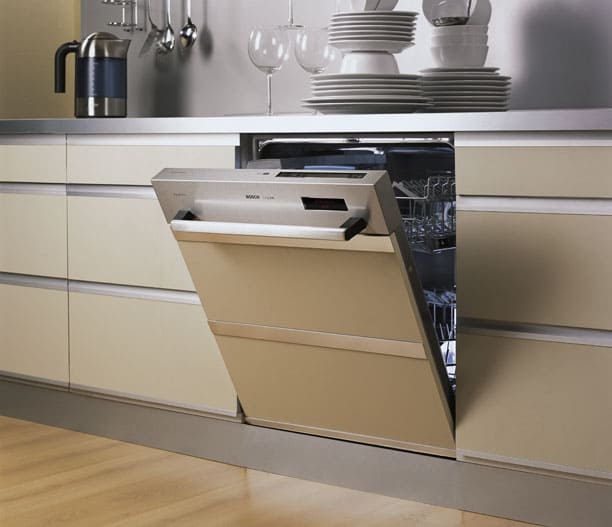
Design and types of drying system
The drying system is available in several options:
- Drying naturally. Occurs due to moisture condensation. Takes several tens of minutes.
- By increasing the temperature of the heating component, which is located at the bottom of the machine. This leads to evaporation of water. No energy is wasted.
- Using a fan. In this case, the dishwasher must be equipped with a fan. Hot air is blown onto the washed dishes. Noisy when in use. Wastes electricity. If you choose a dishwasher with a built-in fan, you should pay attention to sound insulation.
- Thanks to the pressure difference located in the compartment for dishes and water.
- Using zeolite. It is placed at the bottom of the dishwasher. When water hits it, it generates heat. There is no need to replace it. He is capable of regeneration. Consumes less energy than a fan.
How does the leakage protection system work?
Many people worry that water may leak when using a dishwasher. If this happens in the absence of the owner, a damaged floor, a flood and repairs for the neighbors will follow. For safety, leakage protection is built into the machine.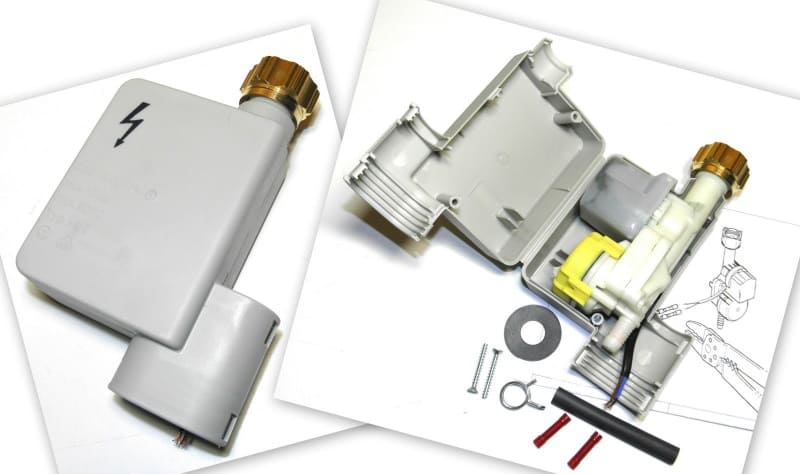
First you need to catch it. For this, a special float is used, which is located in a metal tray. Water accumulates in this place in case of any malfunctions and possible leaks. When water gets into the pan, the emergency system is immediately activated to notify you of the problem. Then the water automatically stops flowing and the electricity is turned off. You should start pumping out the remaining water through the pump. The owner then only has to figure out the cause of the problem and fix it. But due to the fact that the machine is equipped with a leakage protection system, water does not escape beyond its limits.
Distinctive features of some dishwasher models
Some dishwashers have distinctive features. For example:
- Availability of a heat exchanger. This significantly reduces energy costs during drying, but takes time.
- Availability of a sensor. It determines how clean the water entering the machine is.
- The presence of a sensor that determines whether there is detergent.
- The presence of a drying sensor. It determines the level of dryness and humidity of washed dishes.
- Availability of fasteners for fragile dishes and glasses.
- Availability of a turbo drying system. It provides ultra-fast drying of dishes.
- The presence of backlight when opening the door.
- Durable transparent glass. Used as a decorative element.
- Projecting on the floor information about the remaining time.
You can additionally wash root vegetables in the dishwasher without using detergent.It is possible to wash various combs, rubber shoes, children's toys and even cook food by simmering or steaming.
How a dishwasher works
After pressing the “Start” button, a fascinating washing process begins that cannot be seen. You can only hear water being drawn, dishes being washed and dried. It's time to lift the veil of secrecy and figure out exactly how the dishwasher actually does the washing.
Useful for washing:
- water softening salt;
- detergent. Strong may be used. When washed by hand, this will most likely harm the skin of your hands. It is available in tablet or powder form;
- rinse aid
One of the advantages is that no special washing equipment is required: sponges, brushes. It should be remembered that loading dishes must be done according to the rules. Otherwise it will not be washed well enough.
A dishwasher is designed to hold a certain number of dishes. Usually this is from 6 to 12 sets. Controlling the amount of loaded dishes saves energy and the amount of water supplied. By washing in the dishwasher, water consumption is reduced compared to hand washing. This happens due to the repeated use of the same water.
Controlling the amount of loaded dishes saves energy and the amount of water supplied. By washing in the dishwasher, water consumption is reduced compared to hand washing. This happens due to the repeated use of the same water.
After loading the dishes, you need to select the desired program. The principle itself consists of certain stages following each other.
Collection and preparation of water
This is the first stage. On it, a predetermined amount of water begins to flow into the dishwasher. Most often it is cold. However, some models have connections to both cold and hot water at the same time. It passes through an ion exchanger, gets rid of unnecessary impurities, and softens.Mixed with detergent, which was previously poured into the machine.
Then it is heated to a certain temperature, which was set. This is facilitated by a special heating element or flow heater. The heating element is a heating element, like a kettle. It is able to heat water evenly. The flow heater heats the water faster, but also spends more energy. Replacing the heating element will be much cheaper in case of breakdown.
Spraying the working solution under pressure
Water, prepared in advance, enters the sprayers under pressure - upper and lower. Some models also have side ones. Due to the rotation of the rocker arms, water enters all areas of the chamber, and the dishes are completely washed. There are no places where water would not get.
The dishes are wetted with a powerful stream of hot water, washing away dried food residues. The used water flows to the bottom, is filtered and fed back to the sprayers. This process is repeated for the entire time that was set by the program. At the end, the dirty water is drained into the sewer, followed by a collection of clean water.
Rinsing
The penultimate stage, which involves rinsing the dishes. Liquid rinse aid is added to the water. As in the washing process, water enters the sprayers and washes away the remaining dirt and detergent from the dishes with a large flow. Depending on the selected program, rinsing can be done once or twice. After finishing, the water is drained into the sewer.
Drying
Washing the dishes is not the end. At the end, they must be dried. A longer method is evaporation of moisture from the dishes. All condensation flows into the sewer. 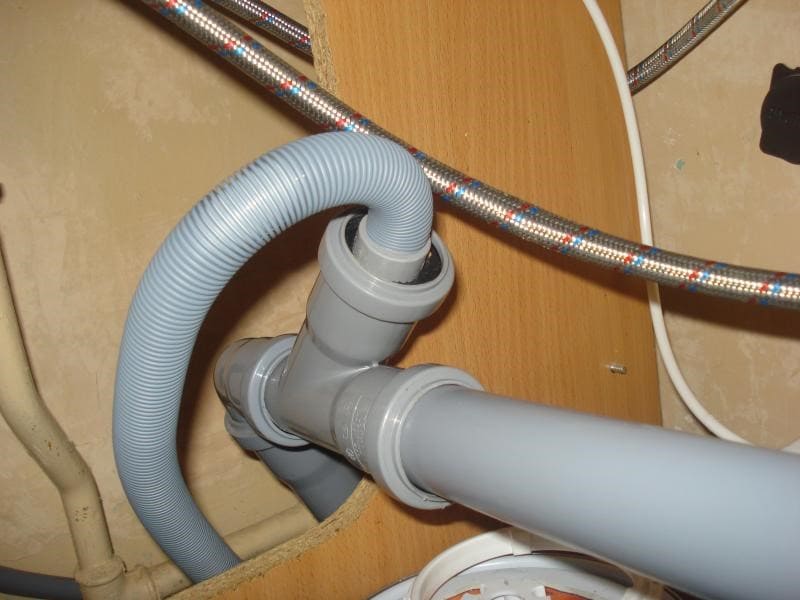 This process is considered natural and takes more time.You can dry them with a special fan that blows hot air on the dishes.
This process is considered natural and takes more time.You can dry them with a special fan that blows hot air on the dishes.
How long does it take to wash dishes
The time set for washing dishes varies from 25 to 160 minutes. The program that sets soaking and pre-rinsing assumes washing dishes for 20 minutes longer. The time can be increased by another 20 minutes if the water is set to 70 degrees. The time depends on the selected washing program.
Here are some of the most popular modes:
- intensive - used for washing very dirty dishes. Water with a temperature of 70 degrees. Time - 60 minutes;
- normal - 100 minutes. The mode includes drying and additional rinsing;
- fast - 30 minutes. Copes with light dirt;
- economical - 120 minutes. Saves resources. Can handle standard dirt.
After the dishes are washed, you need to wait a little more time. Let the dishes cool down.
Rules for using dishwashers
To ensure that your dishwasher lasts a long time and has a minimum of breakdowns, you must adhere to a set of certain rules. Ignorance of them can lead to serious breakdowns:
- It is forbidden to use detergents that produce a lot of foam. It spoils the machine. Special products are used.
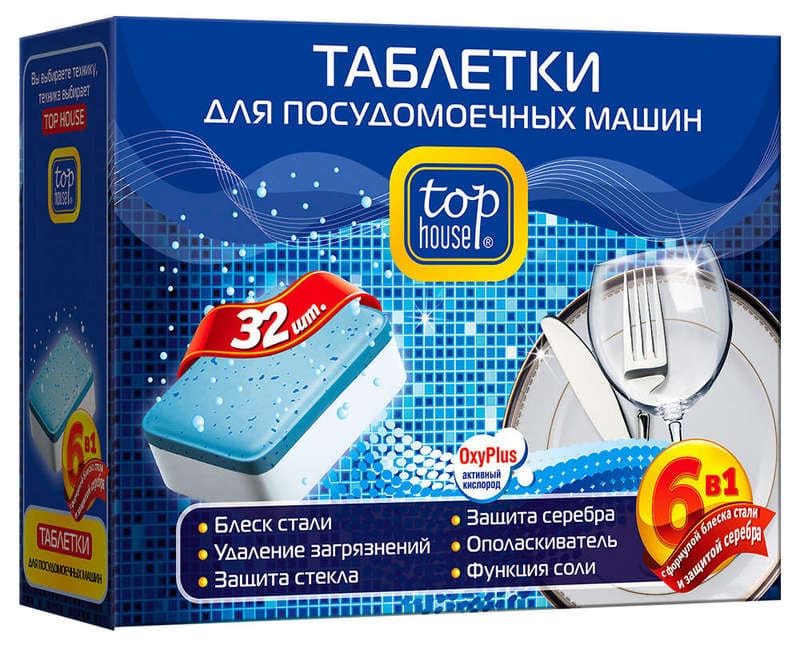 Dishes with light dirt can be washed without them at all. Hot water will be enough in this case. However, such washing should not be done too often to avoid fat accumulations. If they appear, washing with detergent will help get rid of them.
Dishes with light dirt can be washed without them at all. Hot water will be enough in this case. However, such washing should not be done too often to avoid fat accumulations. If they appear, washing with detergent will help get rid of them. - The dishes should not be placed close to each other. Otherwise, the water will not be able to reach all areas, and the wash will be of poor quality.
- It is unacceptable to dry plastic. It can melt from the pressure of hot air.The drops will start to flow and the machine will break down. You should also not wash wooden utensils. Ceramic, silver and brass should be washed with care.
- Glasses and cups are stacked upside down. Thus, washing will be easier, and water will drain more naturally.
- The dishwasher parts must move freely. There should be no obstacles, otherwise it will lead to breaking the dishes.
- It is necessary to clean the drainage filter from food debris. To make it clog less often, you should thoroughly clean the dishes before loading them into the machine.
- If the loaded dishes are dirty enough, then washing them should begin with soaking.
- After purchasing, it is better to do a test for the first time. This will help to clearly determine whether the machine has problems or whether water is leaking. The same way it comes in, it heats up and pours out. At this stage, you can get rid of any remaining lubricants.
- Objects with a sharp end are placed in special compartments. It is necessary to ensure that they do not interfere with the movement of the blades.
- The inner chamber of the dishwasher must be periodically cleaned of dirt and detergent residues. Filters must also be descaled on time. Special detergents can help with this.
Each dishwasher has its own classes. They show how efficiently and economically the work will be done. Stickers with Latin letters on the back side are these classes. The best is class "A".
They are divided into three:
- power consumption class. “A” is 30% more economical than “C”;
- washing class. He is responsible for the quality of dishwashing. A lot depends on the class, but if, in order to save money, you choose the wrong washing mode, the class will not help. The dishes will not be washed properly;
- drying class.Responsible for the quality of drying of washed dishes. Dishwashers with class “A” will cost much more, since the dishes will be washed better.
Buying a dishwasher makes the life of many housewives much easier. It will not only thoroughly and efficiently wash the dishes, but also dry them dry. All that remains is to open the door and put it in its place.
And so that as few questions as possible arise during installation and use, you should familiarize yourself with all possible nuances, operating rules and just general information. And then the dishwasher will last a long time and with the least number of interruptions.






